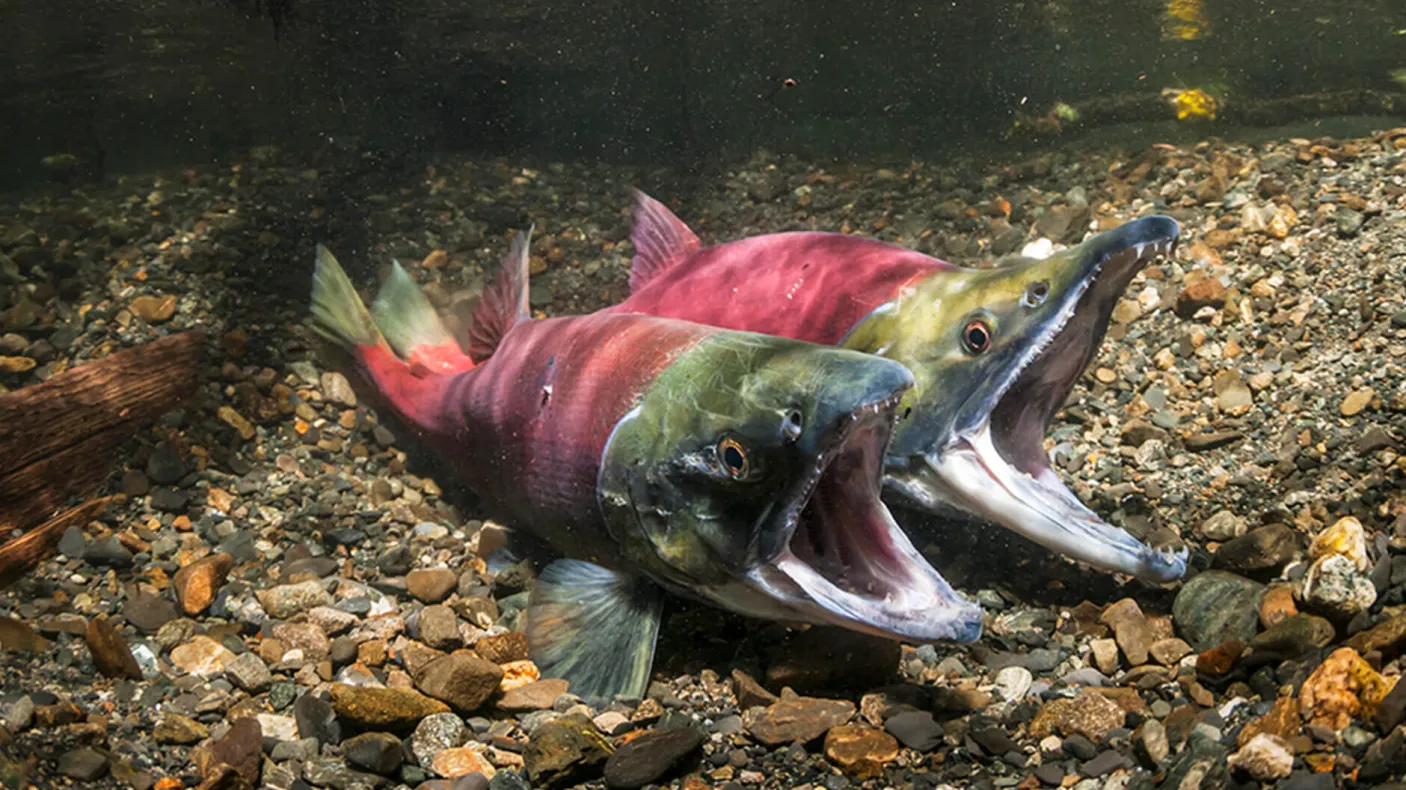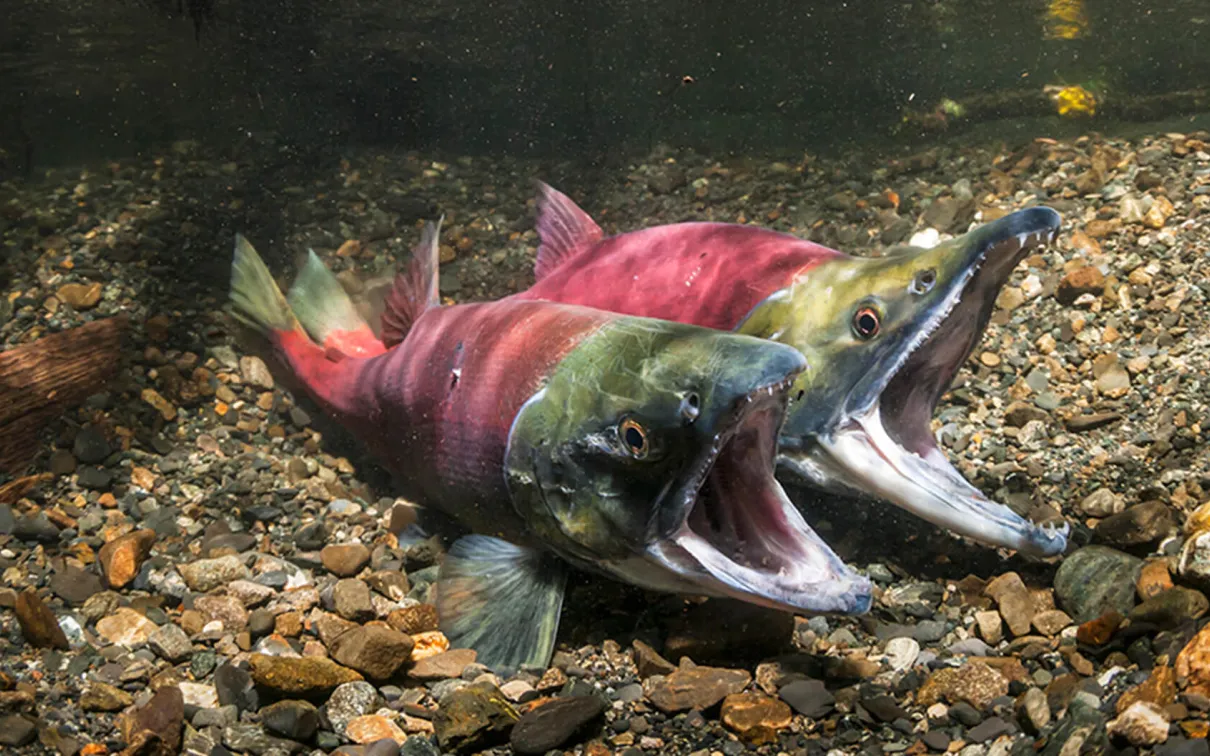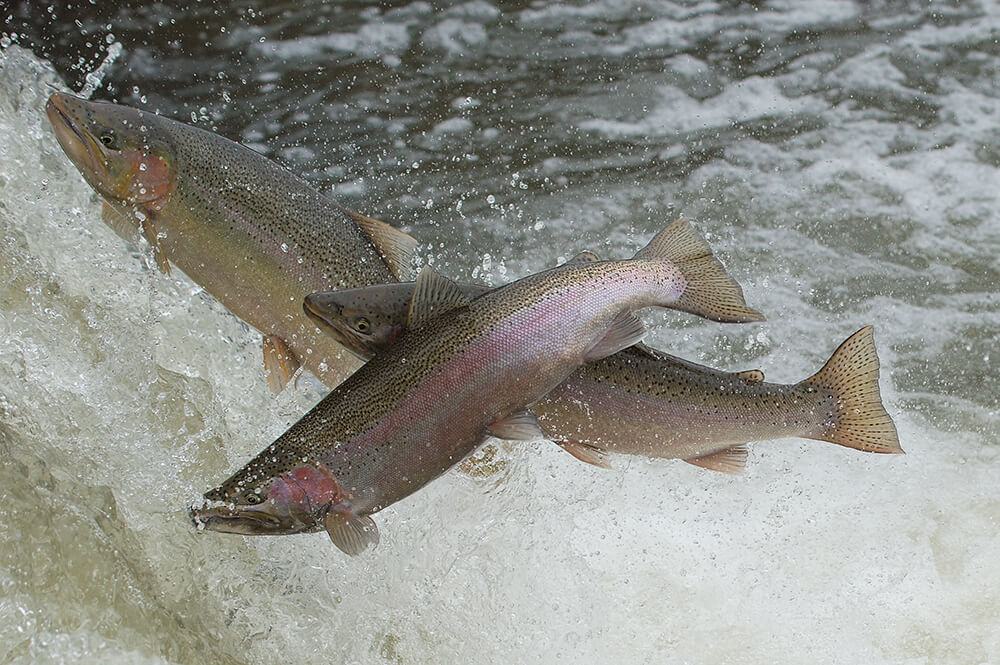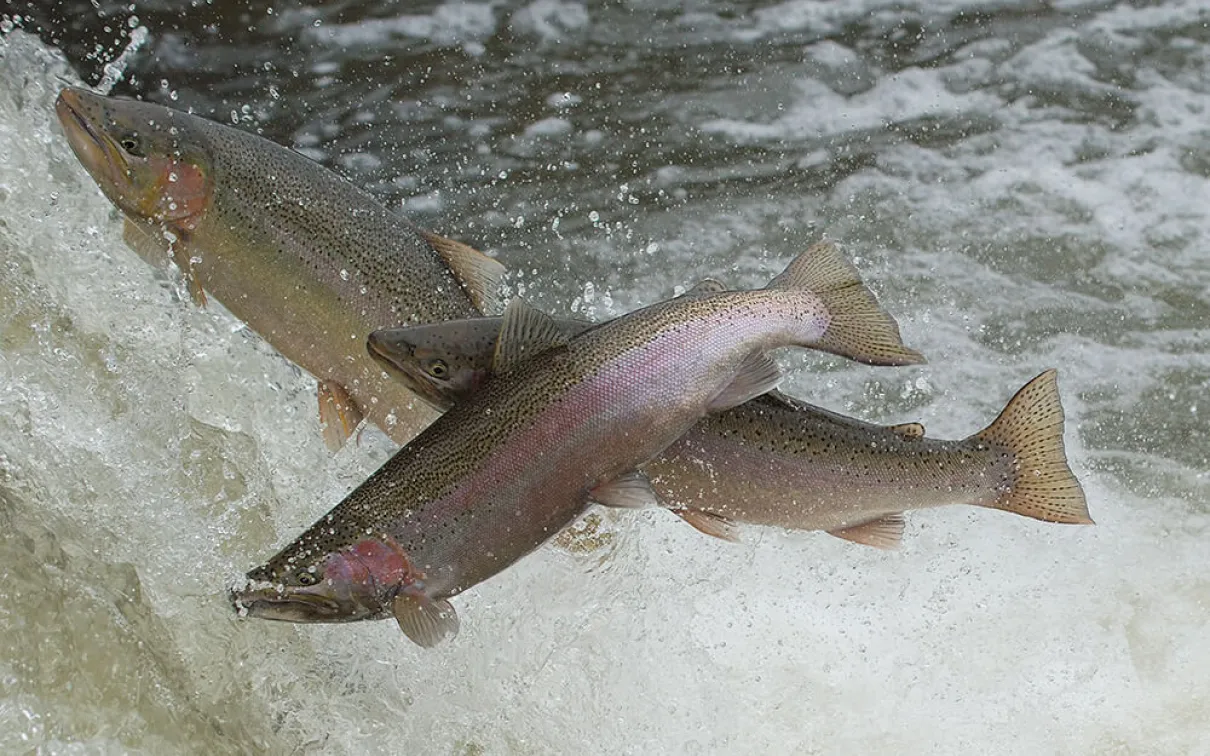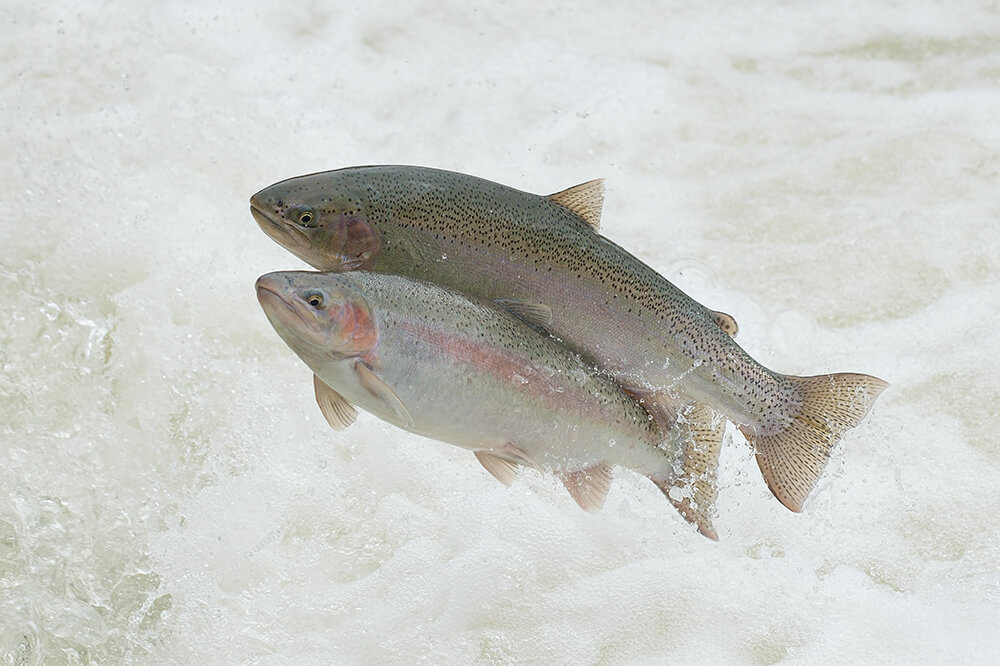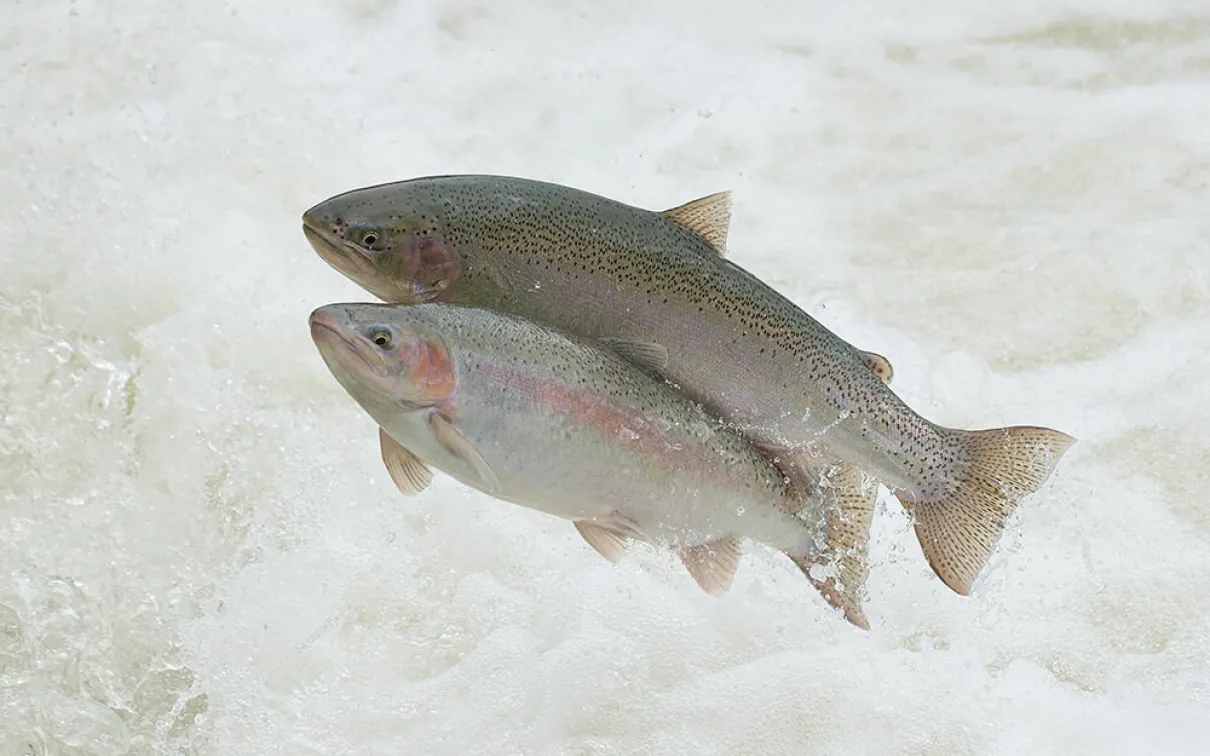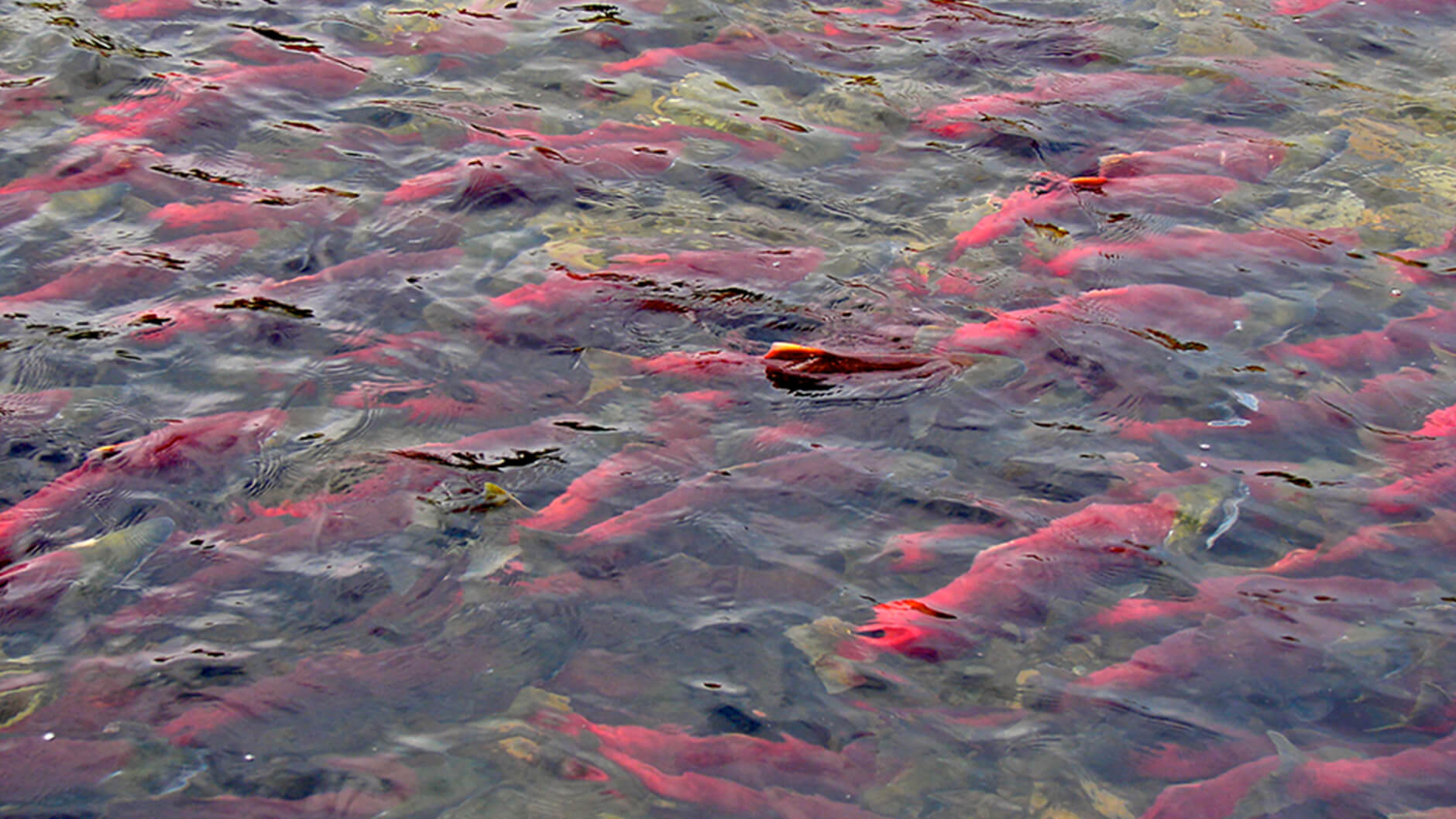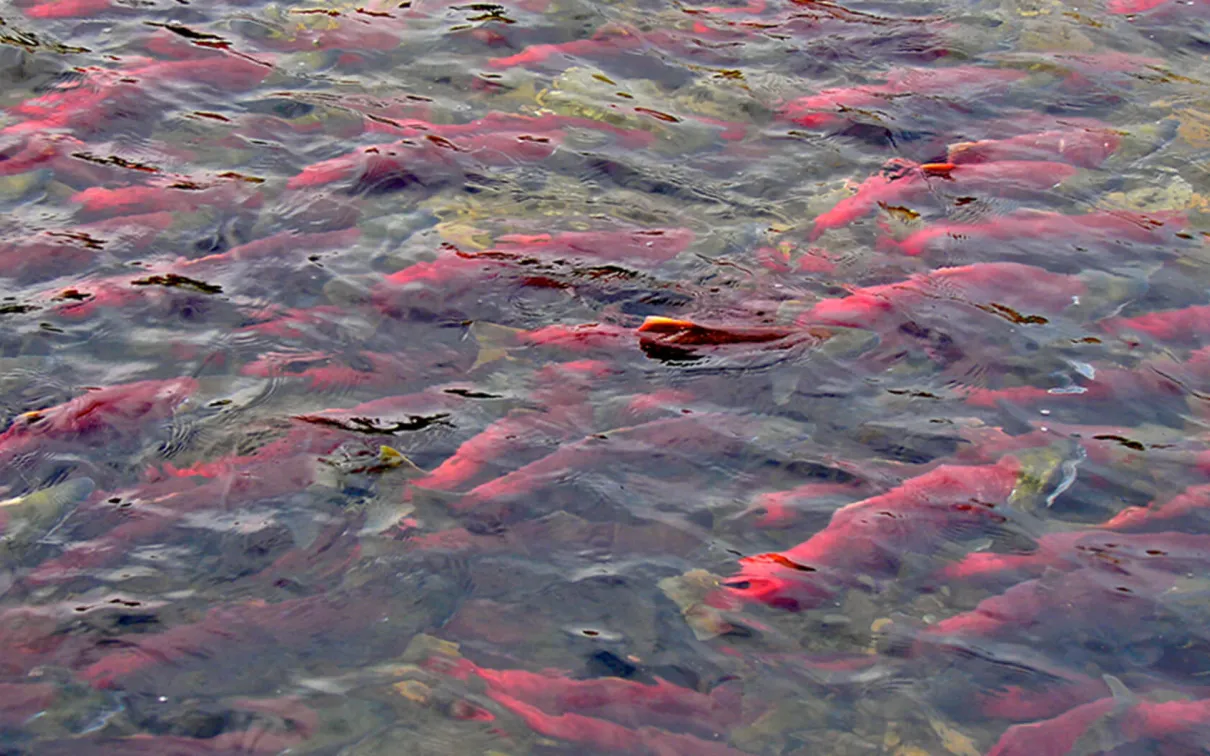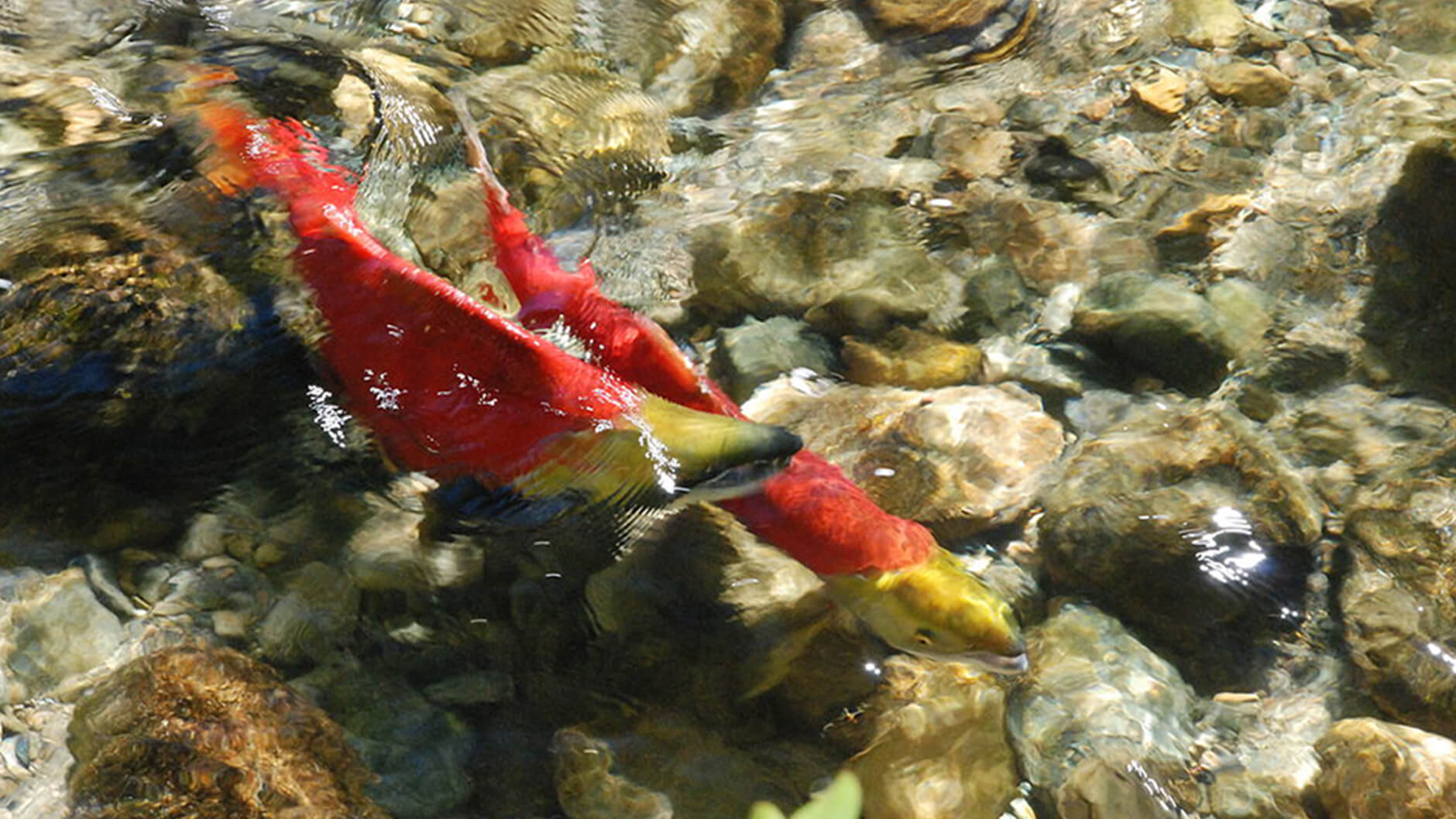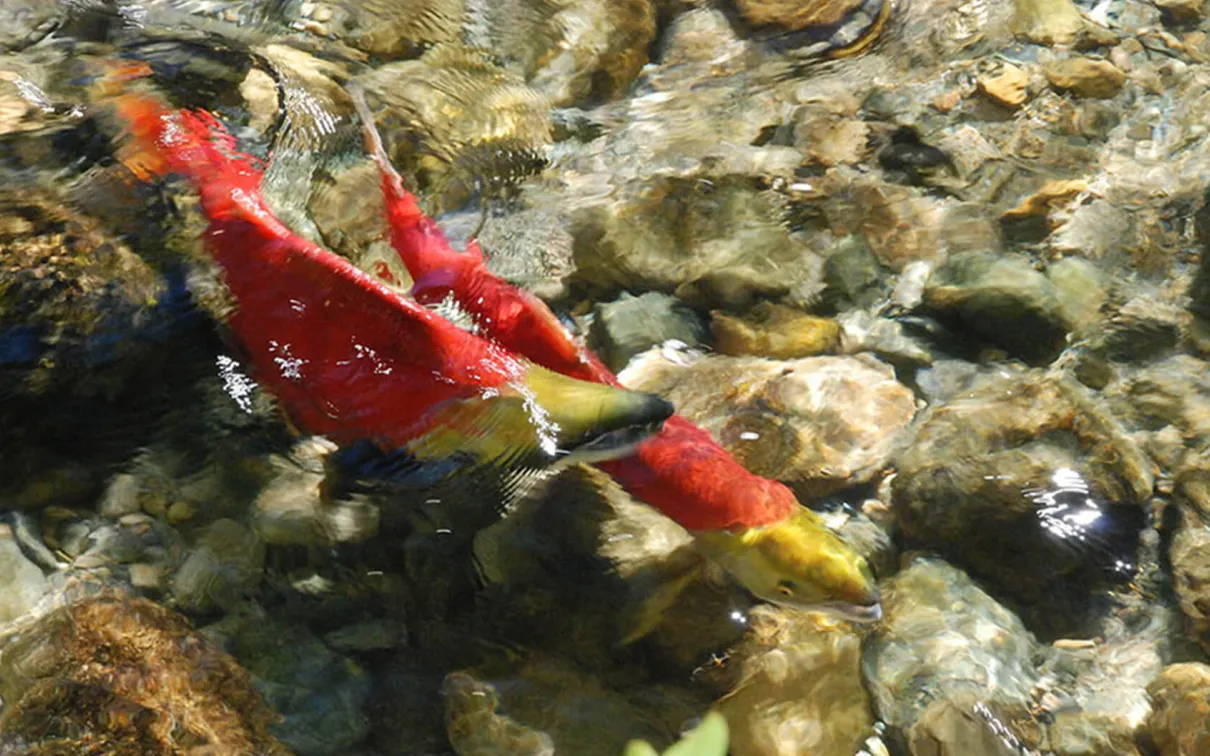Salmon Love: Upstream Migration Gives New Meaning to the Term “Long-Distance Relationship”
The annual upstream salmon migration is an incredible journey of power and endurance as these tenacious fish navigate one of the most taxing periods of their lives.
The story of Ontario’s salmon began
The story of Ontario’s salmon began at the end of the last ice age in Lake Ontario and its surrounding tributaries. As glaciers receded and their meltwaters formed modern-day lakes and rivers, wild Atlantic salmon migrated into Lake Ontario and became land locked, unable to return to the Atlantic Ocean. These Atlantic salmon flourished, playing an integral role in the lives of Indigenous peoples and later of early settlers in Ontario. However, their numbers decreased at an alarming rate in the 1800s because of greed and reckless disregard until they completely vanished by the 1890s. In the past 20 years, successful reintroductions in rivers surrounding Toronto have occurred, and small numbers of the native Atlantic salmon can be seen running up rivers in the fall to spawn.
Gallery 1
In an effort to replace
In an effort to replace the Atlantic salmon, stocking of non-native chinook and coho salmon, which were brought in from the Pacific Northwest, began in Lake Ontario in the 1870s. Shortly thereafter, rainbow trout, also from the Pacific Northwest, was introduced. Although its name suggests that rainbow trout belongs to the trout family along with lake trout, morphological studies have shown that rainbow trout is more closely related to Pacific salmon, and as such, it is now a member of the genus Oncorhynchus with other Pacific salmon. Chinook, coho, and rainbows are ubiquitous today in Lake Ontario, and their spawning runs often coincide with the Atlantic salmon run in September through November. Rivers to view these runs include the Ganaraska, Don, Humber, and Credit, and the runs are one of nature’s amazing phenomena.
Those of us living near Lake Ontario’s shores
Those of us living near Lake Ontario’s shores are fortunate to witness salmon migration, but it pales in comparison to the spectacle of the mass migration of millions of chinook, coho, pink, chum, and sockeye salmon in western North America. From Northern California to Alaska, and everywhere in between, North America’s Pacific coast rivers become awash with the scarlet bodies of running salmon. These salmon have only one thing in mind: running upstream to mate. This mass migration, often more than 3,000 kilometres, is an incredible journey of power and endurance as salmon navigate strong currents, rapids, waterfalls up to two metres in height, logjams, rock slides, fish ladders, and hungry predators like eagles, bears, and humans that wait for their arrival along river banks. Migration is the most taxing period of a salmon’s life. The salmon must divert energy from finding food at sea to becoming a successful breeder. Feeding ceases as salmon leave salt water and enter fresh water. Body fat is transferred to the production of eggs and sperm, and body muscle, which has amassed from years at sea, aids salmon in homing to their natal stream, where they once hatched. The salmon has an amazing sense of smell—it can smell chemicals down to one part per million—and uses chemical cues in the water to find its final destination.
The fight does not end there
The fight does not end there, however. Females, which have the extra burden of developing and carrying an extra 25 percent of their body weight in eggs, now must battle other females to access the best spawning sites. Males, too, undergo radical changes in their body shape. The genus name Oncorhynchus was given to Pacific salmon for good reason: it is derived from the Greek onkos, meaning “hook,” and rynchos, meaning “nose,” in reference to the large hooked jaw that develops in adult males. These hooked jaws, known as “kype,” become weapons to establish spawning dominance, as males aggressively battle for the largest females with the most eggs. The courtship dance begins in the swift headwaters of streams. The female prepares a nest, known as a “redd,” up to 3.5 metres in length by lying on her side and beating her tail aggressively up and down to remove sediment and large stones. She then leads her chosen partner into the nest, and with mouths open wide, their bodies sway in unison as red-orange eggs and sperm fall into the nest. With several flicks of her tail, the female covers the fertilized eggs with gravel. She will guard the new progeny for as long as she can, but the pair is now spent and rapid decline follows. In their final act, the pair has given their all by creating new life, as theirs slowly comes to an end.
Mary Burridge
Mary Burridge is Assistant Curator of Ichthyology at the ROM.

